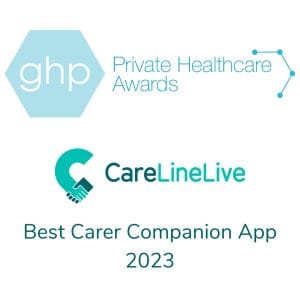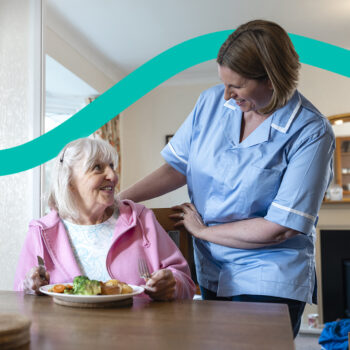The role of a care coordinator is often highly demanding, as it involves navigating a fast-paced environment where circumstances can shift rapidly. Service users requiring care have emergencies and need to change their visits. Carers can run late. The co-ordinators need to keep on top of all this, keeping a cool head. The position demands resilience and adaptability, presenting challenges that become immensely rewarding when the circumstances align favourably. However care coordinators often find themselves in a perpetual state of crisis management, addressing the evolving needs of clients while navigating various staffing challenges. These challenges include illness, absenteeism, holidays, and, importantly, ensuring continuity of care and the well-being of staff.
Many care coordinators spend hours on calls to GP surgeries and a variety of healthcare professionals including sourcing up-dated service user medical and medication information, or taking calls from service users’ families who require updates on visits and care given to their loved ones. And that’s before finding time to manage invoicing and payroll runs alongside filing paperwork correctly in order to be CQC (or other regulator) ready.
Having developed and managed a diverse range of domiciliary services, I have navigated various scenarios, from start-ups and struggling companies to those excelling at the top of their industry. My inclination has always been towards problem-solving. Through my observations of some chaotic environments, I have noted that the ever-changing, fast-paced nature of these settings often result in burnout and a culture where stress is widely accepted as the norm. Particularly if technology is absent or frankly not up to scratch!
While some view this transition to technology as a daunting leap, others regard technology as a financial or logistical burden. Clinging to paper-based or outdated systems ultimately proves to be a false economy, draining resources across services and organisations. Consider the huge amount of time your human resources spend managing makeshift systems, not to mention the costs associated with reams of paper, printing supplies, and communication expenses, amongst others.
Of course some providers will already be reeling at the impact of the recent budget in relation to minimum wage, employers national insurance and other increases. The last thing you probably want to consider is the additional expense of technology. But what if that technology can end up saving you time, money and stress? What if that technology more than pays for itself in financial savings alone? What if that technology automates processes that take your time, and frees up capacity for increased productivity in your teams? Technology can also hugely improve your service quality and allow you to meet regulators’ standards more easily.
Here’s a clip from an interview with Alice Allen, Deputy Manager at North Shropshire Homecare, on how CareLineLive has transformed the work of their Care Coordinator.
Evolution of the role of care coordinator
In the last 15 to 20 years the home care sector has come a long way in a short space of time with regards to technology. When I started in the industry it was common for companies to rely on a mix of ‘homemade’ clunky systems, primarily spreadsheets and paper that was generally inefficient and hugely resource draining. These outdated methods hindered the workflow of many key figures working in home care and in my view a big casualty of that era was the role of the care coordinators. The pressures have increased and it is evident that those in this position now require fit-for-purpose technology to support them effectively. In the past, care coordinators found themselves overwhelmed and in desperate need of assistance from better systems and processes. That’s still the case with providers using paper-based systems (or those working with combined management systems that require duplicate entries for rotas and care planning).
Well-being and technology: A harmonious partnership!
In today’s fast-paced world, the intersection of well-being and technology is more relevant than ever. With the right tools and approaches, technology can significantly enhance our mental and physical health. From fitness apps that promote regular exercise to mindfulness platforms that encourage relaxation and stress management, the potential for technology to support our well-being is vast. Embracing these innovations can lead to a healthier, more balanced lifestyle.
And, all-in-one homecare management technology exists to improve the lives of so many people – from service users, their families and their carers through to those stressed out care coordinators.
CareLineLive’s management portal gives care coordinators easy-to-use tools to manage rostering, care planning, invoicing and more. Our new integration with GP Connect also means you can save all those hours of phone calls to GP surgeries.
Our carer companion mobile app gives carers up-to-the minute rostering changes with all the details they need of previous visits, the care plan and medication requirements for service users.
And service users families have instant access to their loved one’s visit information so they can quickly check in on care given and other information without having to call the care agency office.
Everyone wins. And everyone’s stress levels reduce while the service user receives better person centred care.
Care coordination made easy
As brilliant as your coordinator is, any absence from the office can cause a lot of disruption for many others. Automating information most definitely simplifies life for the wider office staff and those who cover for care coordinators. All the information needed (about the field team and the clients) is now in front of the user rather than trapped it the head of the coordinator which has traditionally been the case for many providers of home care.
Technology: Information availability for rostering
Our customers sought an effective solution for rostering, capacity planning and continuity of care, and we are proud to say that we have delivered just that. It is evident that with the right technology, the role of care coordinator can be transformed. This transformation is significantly enhanced by features such as capacity planning, rostering, and instant access to client and carer information, all available at the touch of a button.
If you would like to find out how CareLineLive supports person-centred care delivery take a look here. You can also book a demo at a time that fits with your schedule here.




